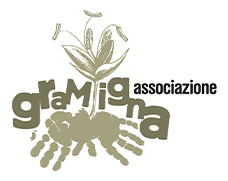EURECA
Good Practices
Photo of a building protected with bird anti-collision film.
Photo taken by Piotr Znaniecki.
Antibird collision windows films
Country:Main Subject:
Description:
Approximately 300 square meters of walls in the buildings on the campus of the University of Białystok, Poland, have been protected with a special UV film, allowing to reduce the number of bird collisions with glass surfaces. The pioneering initiative, implying an innovative UV film was made possible through collaboration between the University and partners: the Polish Glass Traps Foundation, the Austrian organization BirdShades, and a local construction company.
In the modern architecture glass walls, large windows and decorative reflective elements due the common increase of this features represent a serious threat to birds.
"Although it happens that a freshly cleaned window or door glass is so transparent that we don't see it, the human brain, thanks to various cues such as doorknobs or shadows, can 'see' it. Similarly, we distinguish the wall of a forest from its reflection in the mirrored facade of a building. Birds see the world a bit differently. They treat their mirrored reflection as a rival, the reflection of a cluster of bushes as the continuity of the environment, and shaded elements of glass as hiding spots. The mirror effect or the transparency of glazed surfaces is a huge threat to birds, leading them to collide," explains Dr. Krzysztof Deoniziak from the Faculty of Biology at the University of Białystok.
"When the project for our campus was developed several years ago, this aspect of its architecture was not taken into account. Today, we know that some building walls should be secured to enhance the harmony with nature, which is inherent in the campus's design. However, we must do it in a way that does not interfere with the artistic intent of the designers, preserving the visual values of the objects," comments Prof. Robert Ciborowski, the rector of the University of Białystok.
The challenge was finding a material to protect glass surfaces. Common protective films on the market are not entirely transparent, often featuring a visible pattern. Ornithologists observed that for a pattern to be effective, it must be densely placed on the glass so that the bird perceives it as impassable. The nature of the pattern, whether dots, lines, or silhouettes of birds of prey, does not matter as they do not serve as a deterrent but rather as a graphic element.
The perfect solution for use in the university campus turned out to be a product developed by the Austrian organization BirdShades, which has been working for years to protect birds.
"Our film, developed by us, is transparent to the human eye but contains a special pattern at regular intervals. This pattern is active in ultraviolet light, which birds can see. This allows them to perceive the surface covered with our film as an obstacle and navigate around it," explains Dominique Waddoup from BirdShades.
According to the Glass Traps Foundation, which initiated this project, it is pioneering primarily due to its scale. There are not many examples in Poland and Europe of protecting large glass surfaces with UV protective film.
All initiative partners agree that there is also a need for widespread education on the risks of bird collisions with glass surfaces and the possibilities of preventing such incidents.
Reference links:
The University Campus website:
https://25.uwb.edu.pl/kula_w_kampusie_uwb/
Bird warning films:
https://www.birdshades.com/
https://jestemnaptak.pl/jak-pomoc-ptakom/szyby-i-ptaki-niewidzialne-zagrozenie/
https://swiat-szkla.pl/article/17348-2021-03-05-21-48-10
https://szklanepulapki.pl/sklep/
SDG direct/ indirect short justification:
Direct SGDs:
- Life on land (SDG 15)
Indirect SDGs:
- Industry, innovation and infrastructure (SDG 9)
- Sustainable cities and communities (SDG 11)
- Partnerships for the goals (SDG 17)
Justification:
- SDG 15. Eco-friendly building and planning solutions that fit into the land's ecosystem. Protection of wild animals – birds.
- SDG 9. Scientific places with high-tech enivironmental friendly solutions.
- SDG 11. Making sure city areas have smart architectural and planning solutions that follow nature protection rules is a good move.
- SDG 17. Universities teaming up with outside partners to work on eco-friendly actions and solutions, like partnering with NGOs and business making glass films to prevent bird crashes.
Keywords:
City:
Location:
Questions:
- How should we design buildings to follow sustainable development and nature protection principles?
- How can we prevent bird collisions with hard transparent surfaces like windows or sound barriers?
Additional comments:
Placing buildings in environmentally valuable areas (not necessarily protected), like the forest near the reserve in the case of the University Campus in Białystok, is always controversial. Apart from positive educational values, it also puts pressure on the ecosystem it operates in, both during construction (tree cutting, habitat disturbance, heavy transport, noise, disruption of water balance, etc.) and during use (staff and student transportation, noise, light, heat island effect, etc.).
Authors:
Piotr Znaniecki




